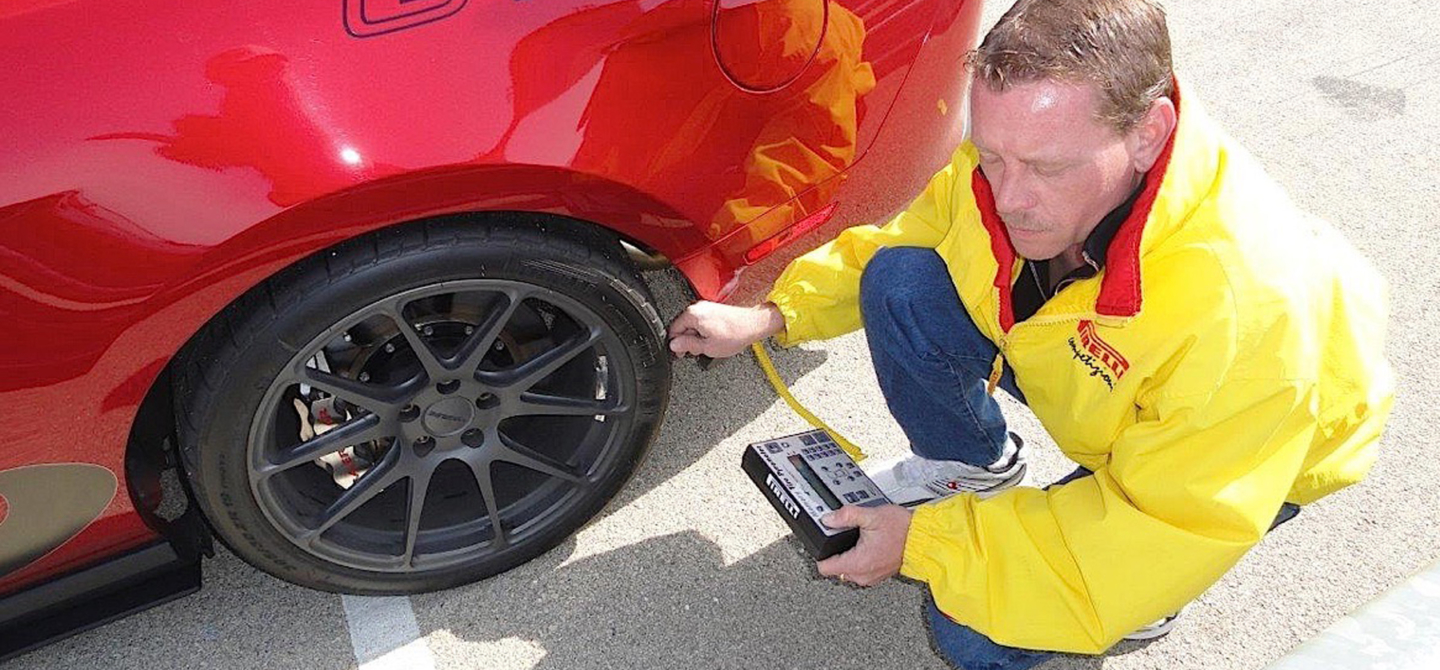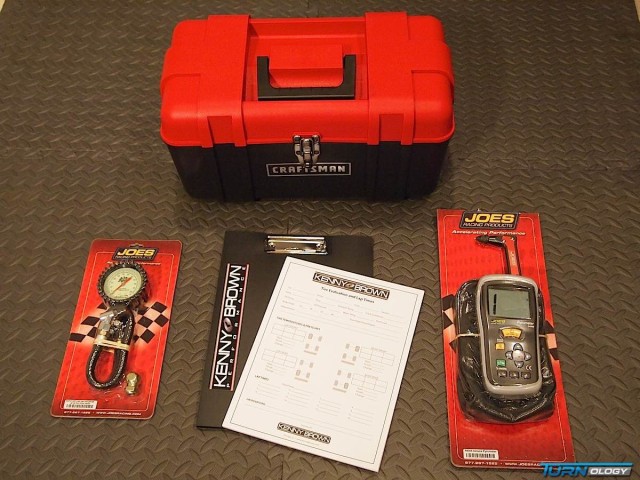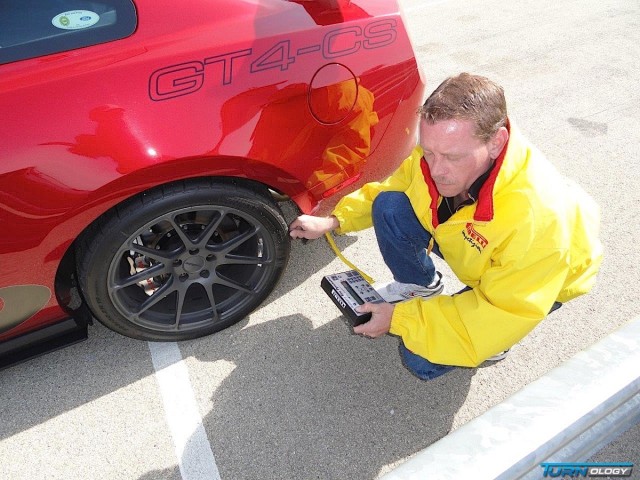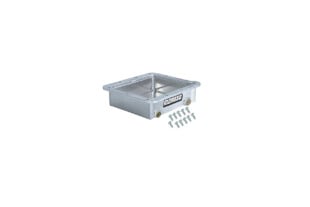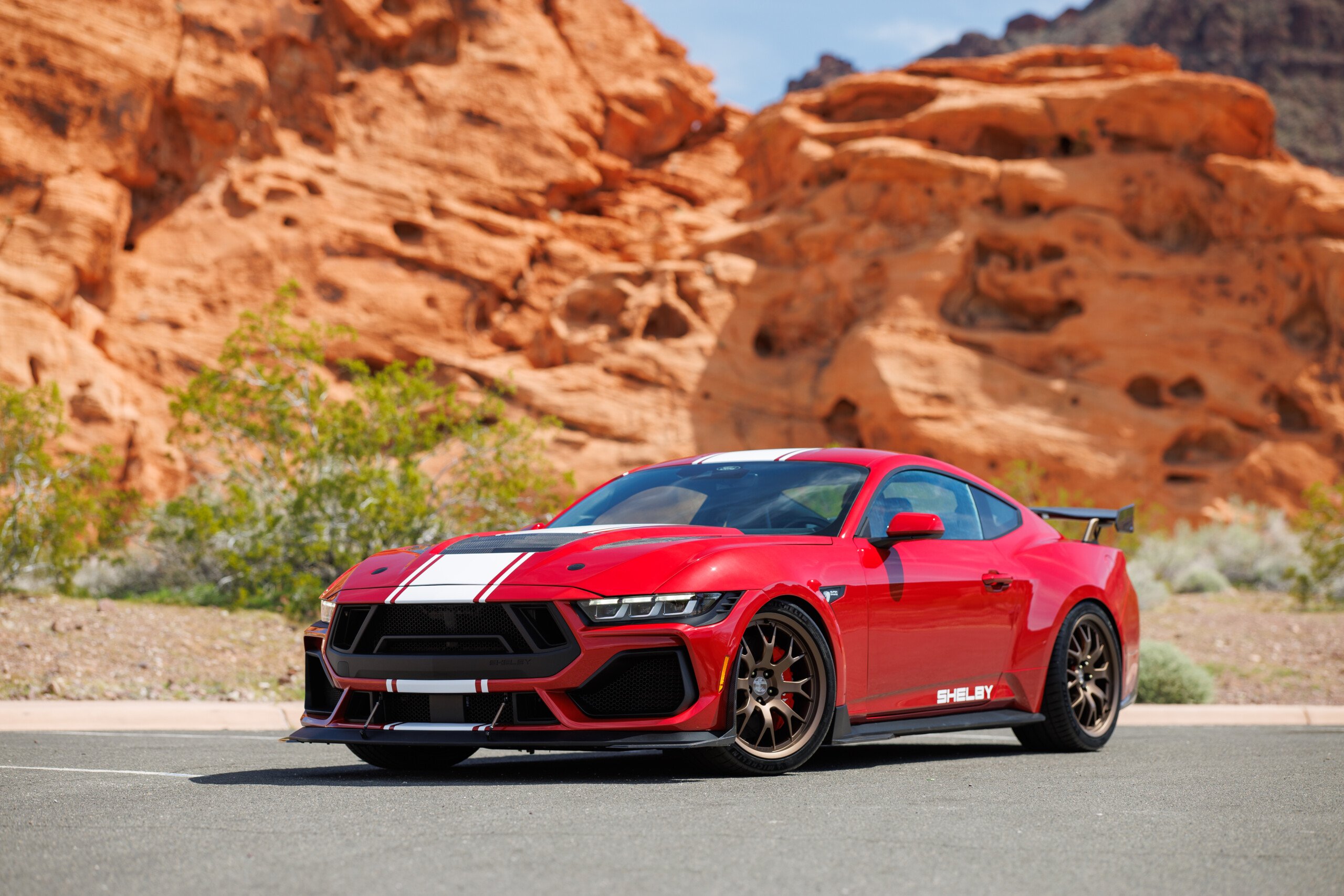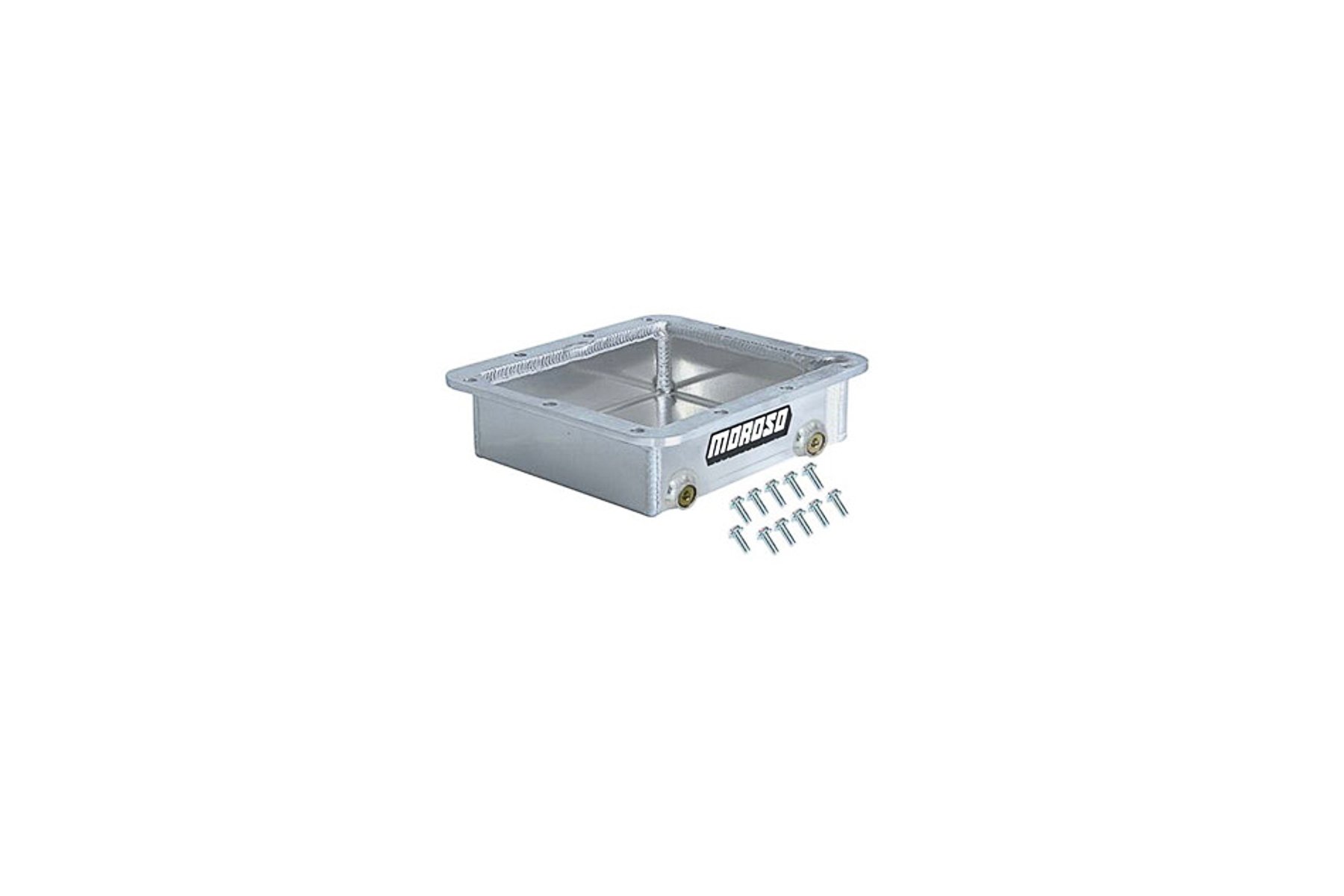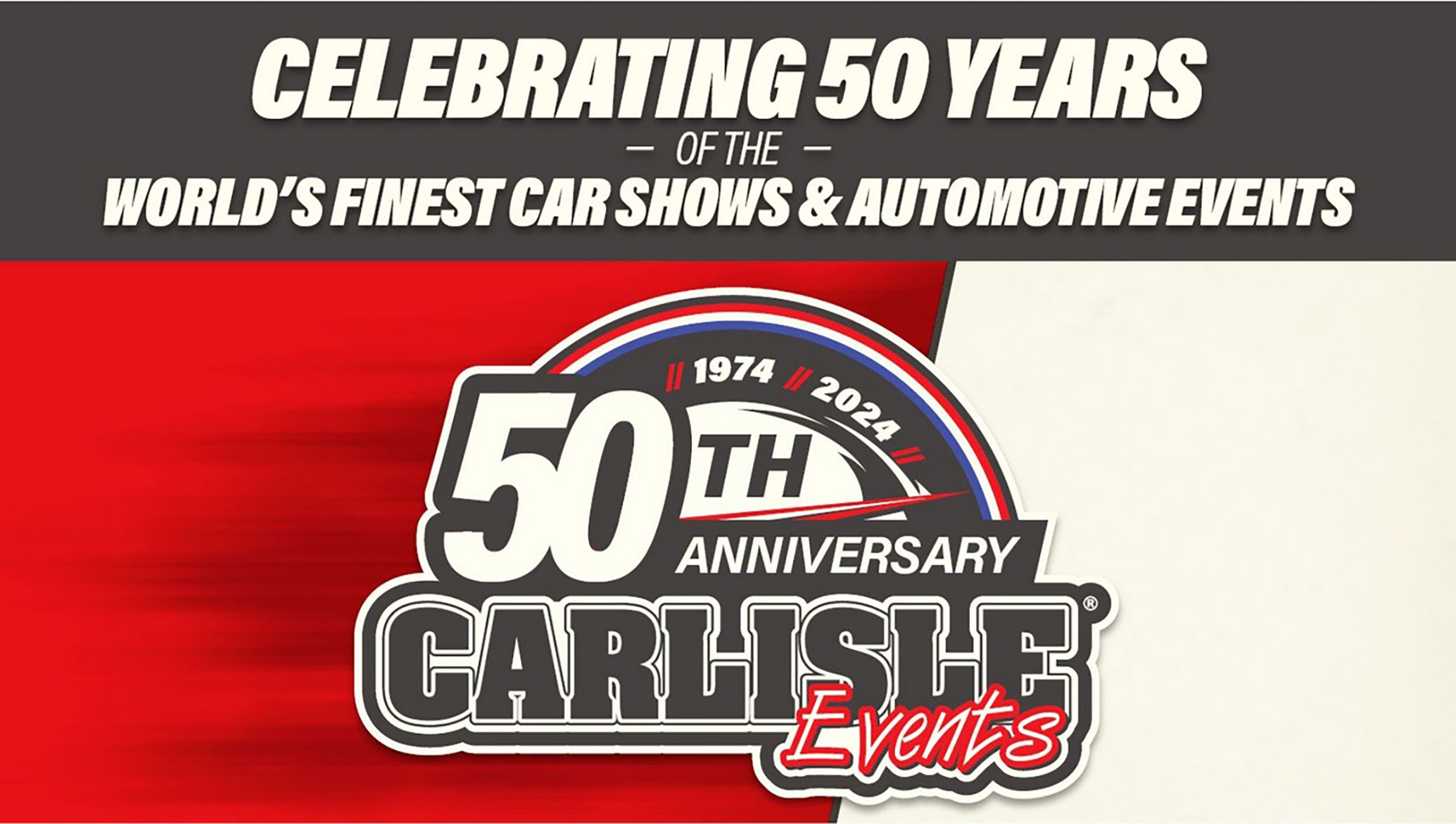There are very few things that you can adjust on your car quickly at the track between sessions and gain big results. Taking your tire temperatures and adjusting them is quick, easy, and has a big impact on how the car drives and handles. This is truly a “Speed Secret“, as many track-goers do not realize the impact this little step can have on their car’s handling characteristics, – and improved driving equals more FUN.
Every time we go to the track we will spend one, maybe two, sessions just working on tire pressures before we adjust anything else. If you don’t have a solid baseline to work from, as in the correct tire pressures, you don’t know what to adjust, or you may adjust something that doesn’t need adjusting because the problem is the tire pressures.
Contact Patch

Using Nitrogen (N2) in your tires results in much more consistent tire pressures thanks to an extremely minimal moisture content.
In my Kenny Brown Track Tech Sessions I teach how to take and read your tire temperatures/pressures. I always have people come up to me at the end of the event telling me they can’t believe how much improvement doing their temperatures/pressures made. Even as little as a pound or half a pound made a big difference in driving.
The only thing between you and the track are your tires – or more specifically, the tire contact patch. So, it makes sense to make the contact patch as big as possible and, in turn, maximize the grip of the tires. Once you have maximized your contact patch, you can look to making adjustments to suit the track you are at and your driving style. One of the most critical pieces of data I study when developing products for open-track applications or when testing and racing is tire data. Tire temperatures will tell you a lot if you know what to look for.
Tires get hot when they are loaded; acceleration, braking, cornering, and steady state driving all deform tires and cause them to heat up. Tire temperatures can tell much about how the load is carried and distributed over the tires.
Once you get good at taking and reading your tire temperatures and pressures, you can begin to evaluate your alignment settings, tire sizes, shocks, springs, sway bars, etc. just from using this one little tool at the track.
Tire Temperatures 101: Taking Tire Temperatures And Pressures
Temperature tells us a lot about what’s going on at the track surface and with the suspension components and driving style. The tools you need for tire temperatures are pretty simple: a tire pyrometer which measures tire temperature, an air pressure gauge, and a note pad. Having an extra person or two makes the process go a lot quicker. You want a tire pressure gauge that has a bleed valve so you can adjust pressure easily. Tire pressure gauges run between $20 for a basic analog gauge and up to $140 for a digital type. Pyrometers cost from $100 for a basic unit to around $350 for deluxe model that shows all four corner’s tire temperatures and stores them in the gauge itself.
Steps To Checking And Analyzing Tire Pressure
- Step one: Take cold tire pressure and record before you go on track – this is a crucial step.
- Step two: Come into the pits as hot as is allowable (safety first!) and have a person “stick” the tires and get the hot tire pressures. Another one of my little tricks: On the cool down lap, I slow on the straights to cool the engine and brakes but try not to brake for the corners so I can keep up my cornering speed for better and more accurate tire temperatures.

Here’s a quick tip on camber adjustment using tire temps. Once you have your temps stabilized: If the inside temp is higher than the outside, there is too much camber. If the outside is higher than the inside, you need more camber. Or, if there isn’t much camber in the car you might want to check the toe. Too much toe-in heats the outside edge, too much toe-out heats the inside edge.
Stick the probe a few millimeters deep at about an inch from the outside edge of the tire, in the middle and about an inch in from the inside edge, recording the temps and hot pressure: By sticking the tires I mean taking the pyrometer probe and sticking it into the tire in three spots. I don’t recommend laser temp gauges because they only read the surface temp, which falls off quickly. You need the temperature that is deeper in the tire as it cools slower and is a more accurate temperature reading.
Using Temperature Readings To Adjust Tire Pressure
The three temperature readings we take tell you a lot. They show whether the tire is under-inflated or over-inflated, and how well the alignment is suited for the specific track.
Once you have the tires working at the correct pressure and maximum contact patch, you can look at making adjustments in alignment, sway bars, shocks, springs, etc.
Again, the objective is to balance the temperatures, so looking at the outer and inner temperatures, to balance the tire you would be looking for 130 in the middle so you would add a little air. Inversely if the temps were 120-140-140 you would take out a little air. When the tire temperature on a DOT tire is relatively even, give or take a few degrees, you know you’re finding the tire’s “sweet spot” in terms of pressure and maximized contact patch.
On the Kenny Brown Tire Temp Sheets, there is space for two temperature readings, starting pressure, the amount of adjustment, end tire pressures, and notes. Writing everything and every adjustment down is extremely important. Relying on memory is never a good thing – especially at the track.
Nitrogen Filled Tires
If nitrogen is available I strongly recommend it over outside air for your tires. The reason is, nitrogen is a dry, inert gas – the operative word is DRY. Outside air contains moisture. The moisture varies day-to-day and expands at a different rate when hot. The humidity of the day has an impact on the hot pressures because of the moisture content. Here is good example: At Lime Rock running the Mustang Challenge cars, I was having a devil of a time getting the pressures right, as each session yielded a different temp/pressure.
For the race, I had to guess at the cold pressures and the tires went off about halfway through the race, which shouldn’t have happened. It was a mystery. Later, we found that we had a lazy truck driver who was responsible for the tires. Rather than emptying all the air out of the tires and filling them with nitrogen, he was just topping the tires up with nitrogen only if they needed it. This meant most, if not all, of the air in the tires was humid outside air. The culprit was humidity – it was a hot and super humid weekend, meaning the air in the tires had a very high moisture content, which made the hot pressures inconsistent. If nitrogen is not available, try to air your tires on a dry low-humidity day for better results.
Here is one of my tricks to save you time the next time you go to the track: In the morning, or after the tires have cooled completely from being on track, check the cold pressures. Again they may be different for each tire but this gives you your cold starting pressures for the second day or the next time you go to the track.
There is an exception to the above temp/pressure procedure and that is racing slicks. The above is for DOT street or track tires.
True racing slicks like the Pirelli slicks we use in the Pirelli World Challenge operate at a specific pressure on all four corners.
Race tires are designed with stronger (different) sidewall construction at their recommended hot pressures for maximum contact patch and grip. Under hard cornering, the Pirelli slicks don’t roll over like street tires; they sort of move sideways a little as there is huge grip on the contact patch and the weight of the car and corner loading will make the wheel move a little back and forth sideways on the tire contact patch.
Tire manufacturers will recommend a specific pressure (such as 32 psi) so instead of doing all the temps to adjust the pressures, you just adjust the tires to the recommended pressure. I use the same procedure of taking the cold pressures when the tires cool as they may be different for each tire. This gives a head start on the day by using previous end of day cold pressures as a starting point. But tire temps are still important, as they will show if the alignment is maximizing the contact patch and gives direction for adjustments.
Once you have the tires working at the correct pressure and maximum contact patch, you can look at making adjustments in alignment, sway bars, shocks, springs, etc.


